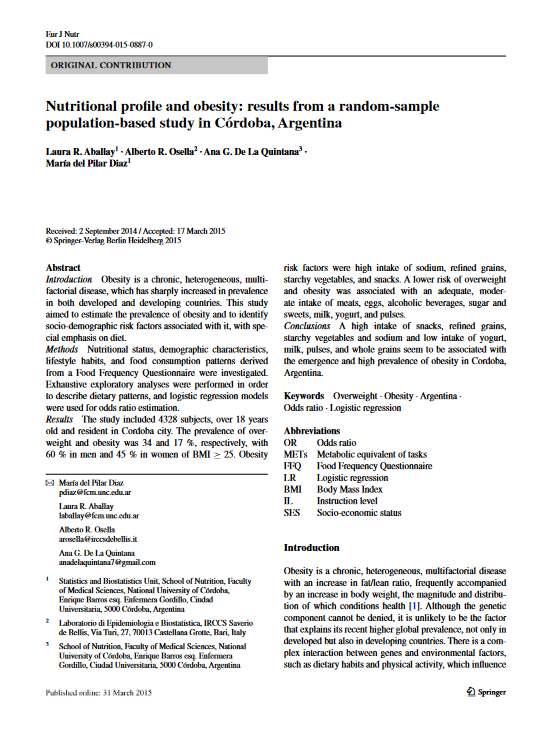Nutritional profile and obesity
Licencia: Creative Commons (by)
Autor(es): Aballay, Laura; [et al.]
Introduction Obesity is a chronic, heterogeneous, multifactorial disease, which has sharply increased in prevalence in both developed and developing countries. This study aimed to estimate the prevalence of obesity and to identify socio-demographic risk factors associated with it, with special emphasis on diet. Methods Nutritional status, demographic characteristics, lifestyle habits, and food consumption patterns derived from a Food Frequency Questionnaire were investigated. Exhaustive exploratory analyses were performed in order to describe dietary patterns, and logistic regression models were used for odds ratio estimation. Results The study included 4328 subjects, over 18 years old and resident in Cordoba city. The prevalence of overweight and obesity was 34 and 17 %, respectively, with 60 % in men and 45 % in women of BMI ≥ 25. Obesity risk factors were high intake of sodium, refined grains, starchy vegetables, and snacks. A lower risk of overweight and obesity was associated with an adequate, moderate intake of meats, eggs, alcoholic beverages, sugar and sweets, milk, yogurt, and pulses. Conclusions A high intake of snacks, refined grains, starchy vegetables and sodium and low intake of yogurt, milk, pulses, and whole grains seem to be associated with the emergence and high prevalence of obesity in Cordoba, Argentina.
[Córdoba: 2015]
Compartir:
Una vez que el usuario haya visto al menos un documento, este fragmento será visible.


